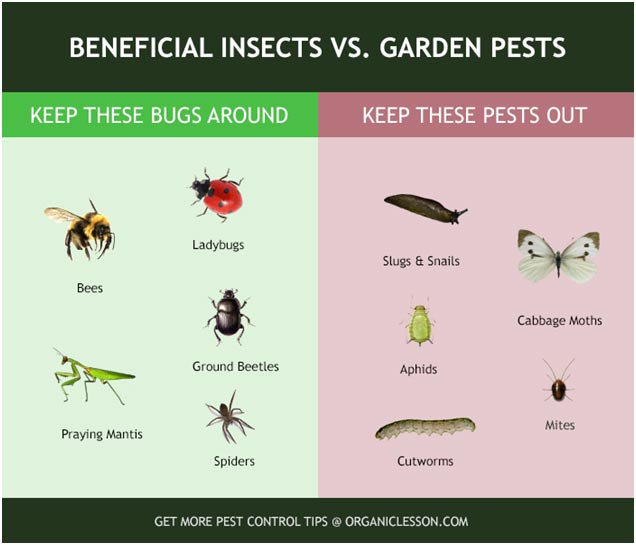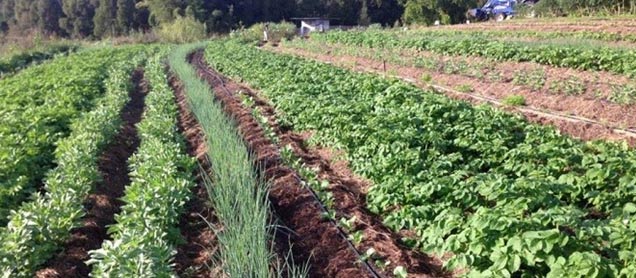Pest Management
Contrary to the common belief that pests are bad for the crop, we realized that there are both “good pests” and “bad pests”. Understanding the dynamics of this ecological balance helps manage pest naturally. Some of the methods we adapt at our farm for pest management are as follows

Natural Control
Pests and diseases are part of the natural environmental system. In this system there is a balance between predators and pests. This is nature's way of controlling populations. The pests and the organisms that cause disease only become 'pest and diseases' when their activities start to damage crops and affect yields. If the natural environmental system is imbalanced then one population can become dominant because it is not being preyed upon.
The aim of natural control is to restore a balance between pest and predator and to keep pests and diseases down to an acceptable level. The aim is not to eradicate them altogether, as they also have a role to play in the natural system.
Methods we use for Natural Pest and Disease Control
• A healthy soil
• Soil pH
• Companion planting
• Barriers
• Light traps
• Hand picking
• A healthy crop
• Timely sowing
• Plants to attract predators and parasites
• Traps
• Fly traps
• Natural pesticides
Healthy soil and plant
A soil managed using organic methods will give plants a balanced food supply. Our plants are fed well and hence are much more resistant to pest and disease. To maintain a healthy soil, we take the following steps
• Maintain levels of humus (organic material) that give structure to the soil
• Feed organisms which live in the soil
• Provide nutrients for crops

Intercropping
Intercropping is planting of more than one crop in close proximity as part of the same farming system. The use of intercropping systems provides a good option for insect control for organic farmers.
The crops grown will have either a repellant effect or an attractant effect or a combination of both. It is important to study deeply the ecology on the farm to decide on the best method of intercropping.
(a) Trap cropping:– Here, the plant that is used as an intercrop (trap crop) is more attractive than the production crop to the insect, so the insect is drawn to the trap crop and hence the production crop is saved
(b)Repellant intercrop: - In this system, the repellent intercrop masks the production crop from the insect pest, deterring the insect from its host crop.
(c)Push-pull cropping: A combination of repellent and attractant crops can be used in an intercropping system for insect pest control.
Intercropping of compatible plants can also encourage biodiversity, by providing a habitat for a variety of insects and soil organisms that would not be present in a single-crop environment. These organisms may provide crops valuable nutrients, such as through nitrogen fixation.
Spray
A Combination of natural substances made from the on-farm inputs are sprayed to protect the plants from pests and insects. Some of the powerful, most natural, on-farm formulations are:
• Panchagavya
• Neemastra
• Jeevamrutha
• Agniastra
• Brahmastra

Trap
The use of baits and traps are traditional methods of preventing pests and insects from attacking the crop. Cut worms, Fruit flies are some of the typical pests that are managed using methods such as spreading baits, preparing traps (liquid trap, light trap, fly trap, pheromone traps).





